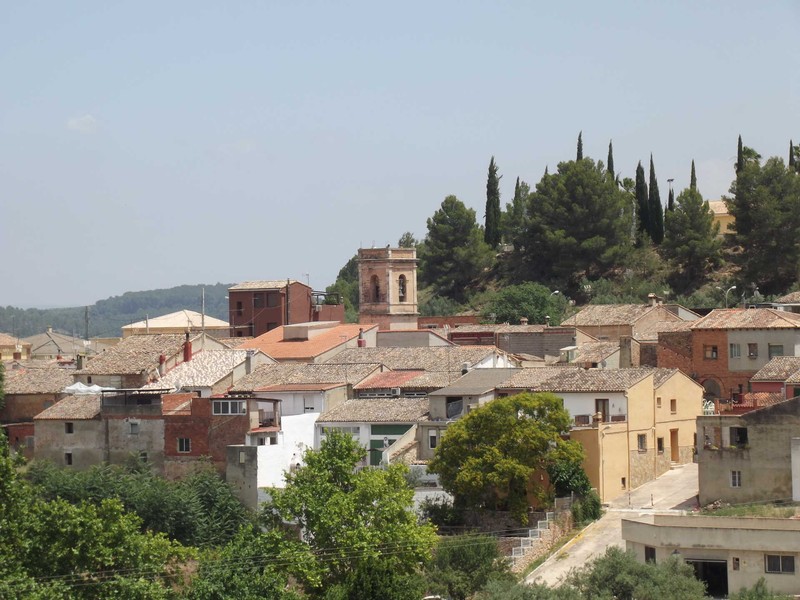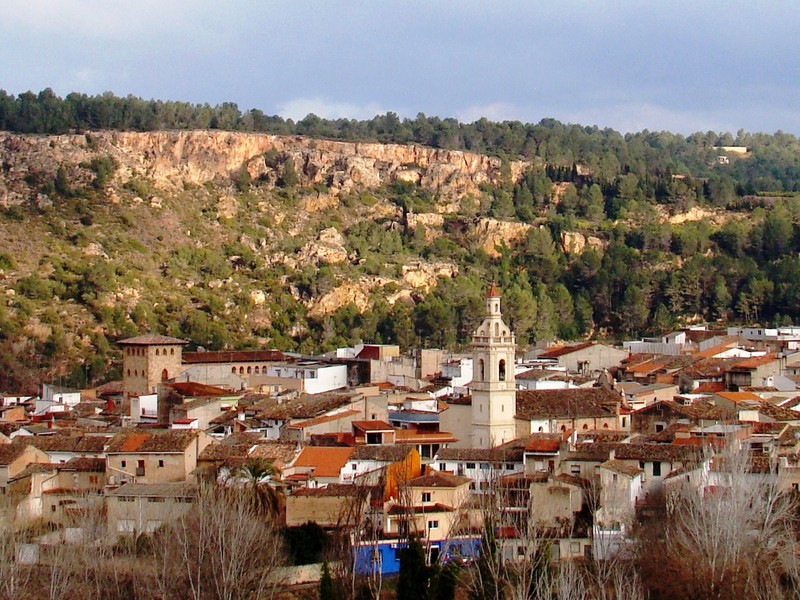Pico Caroche (Bicorp)
The Caroche or Caroig peak is a mountain of 1,126 meters, located in Teresa de Cofrentes, Spain. It is situated
The mosque of Bolbaite was consecrated as a church in 1521, as a result of the Revolt of the Brotherhoods and annexed to Chella in 1525. It separated from this parish in 1535 and was devoted to San Francisco de Paula, who had been canonised a few years earlier in 1519. In 1574, after visiting the place, the Archbishop of Valencia and patriarch San Juan de Ribera drew the attention of the Lord of the Barony, Jeroni II de Cabanyelles alias Vila-rasa, to the poor condition of the church. He had it rebuilt and decorated, and the priest was provided with an abbey house (1580-1590). In exchange, the Church gave him and the successive Lords of Bolbaite the right of patronage, that is to say, the right to appoint the priests of the parish.
The old morisco church was large enough in 1612 to house the new congregation of Old Christians, but it had to be rebuilt as a result of the rapid growth that Bolbaite experienced in the 18th century. The work undertaken in 1780 resulted in a neoclassical-style nave, with side chapels between buttresses, covered with a half-barrel vault, in five sections. On both sides of the presbytery, which has a headwall with a niche, are the sacristy and the Chapel of the Communion. The structure is stonework, with the base and corners strengthened by ashlars and stucco plaster on the front of the façade. The façade is completed by a mixed-style profile crowned by pinnacles. In its centre, the façade houses a late-baroque altarpiece with striking symmetry and elegant décor: a door framed by pilasters with compound shafts, an upper niche with a sculpture of the patron saint, and a large window covered by arched mouldings; all combined with the scalloped pinnacles typical of the eighteenth century. Behind the façade, semi-hidden behind its wall, stands the bell tower on the left-hand side.
Inside, the white colour of the walls enhances the fluted pilasters which have compound and gilded shafts that form the side chapels. They were covered with pendentive domes and house, among other religious statuettes, that of the Cristo del Amparo (Christ of Shelter). The large niche of the presbytery, overlooked by the solitary carving of San Francisco (the old one, destroyed in 1936, was the work of the sculptor Nicolás de Bussi), is decorated with frescos by the painter Salvador Pallás, a native of Chella, which represent scenes from the life of San Francisco de Paula. They were restored in 1976 by Enrique y Bartolomé Casoval. “The Saint” par excellence, as he is popularly known, is particularly revered in Bolbaite and a precious relic of his is kept in the sacristy. The bell tower is a prismatic tower, with simple mouldings, a work from the 19th century, crowned by spheres at the top and an octagonal roof lantern fastened by buttresses. It houses the largest bell, devoted to San Francisco de Paula and Saint Barbara, from 1851; the medium-sized bell, dedicated to Cristo del Amparo (Christ of Shelter), a work by Hermanos Portilla from 1996, and another smaller one, a work by the foundryman Manuel Roses from 1942, known as “El Joaquín”.
The Caroche or Caroig peak is a mountain of 1,126 meters, located in Teresa de Cofrentes, Spain. It is situated
You will love La Canal de Navarrés! It’s an ideal destination for the whole family, to discover with friends, and

Estubeny, located in the interior of the province of Valencia, is an inland destination that hides a unique natural space,

Anna is a beautiful municipality in the Canal de Navarrés, well known for its Anna Lake, a lagoon surrounded by
Copyright © 2023. La Canal de Navarrés. All rights reserved.
Do not hesitate to contact us for any further information.
This website uses cookies so that we can provide you with the best user experience possible. Cookie information is stored in your browser and performs functions such as recognising you when you return to our website and helping our team to understand which sections of the website you find most interesting and useful.
Strictly Necessary Cookie should be enabled at all times so that we can save your preferences for cookie settings.
If you disable this cookie, we will not be able to save your preferences. This means that every time you visit this website you will need to enable or disable cookies again.